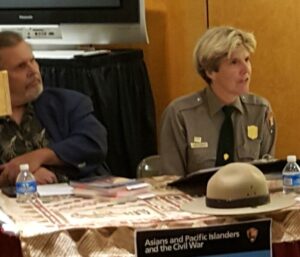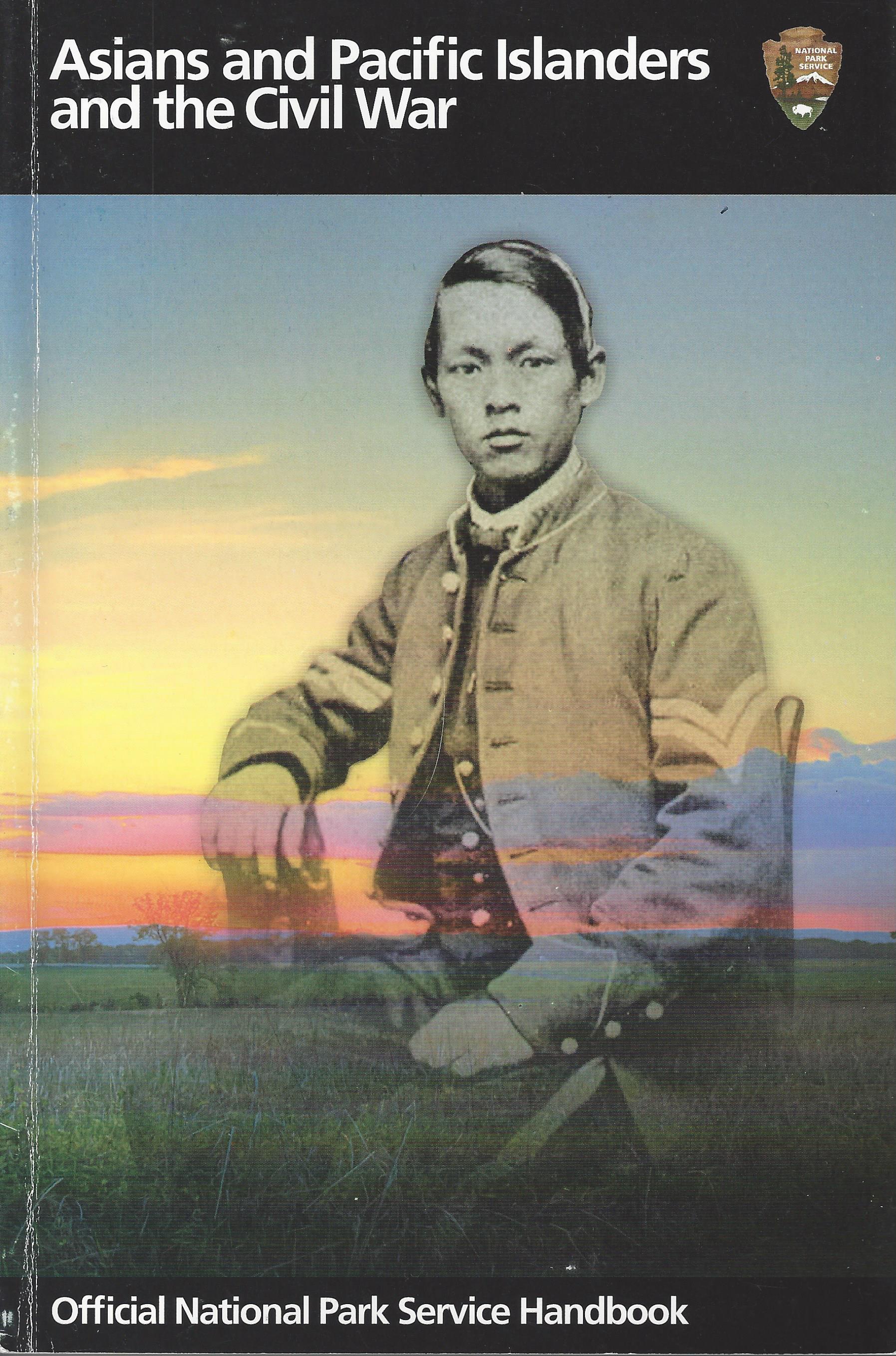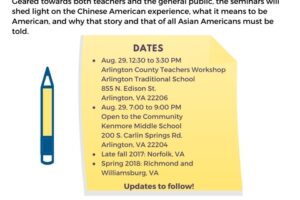Chinese in the South and in the Confederacy
by Roberta Chew. September 29, 2015

The 1882 Foundation with the Alexandria Black History Museum hosted activities to commemorate the 50th anniversary of the 1965 Immigration and Nationality Act (Hart-Celler Act) and the Civil Rights Movement. The activities sought to highlight instances where ethnic American histories overlapped. Ted Alexandria, National Park Historian at the Antietam National Battlefield, provided these comments:
Most don’t know that a few hundred Asians served the Union cause in the Civil War. Even fewer know that Chinese lived in the south and some joined the Confederate Army. Chinese arrived in the south in the 1840s and 1850s. They had disembarked at the major southern ports – Baltimore, Charleston and New Orleans. Some moved inland to settle in places like Louisville, Kentucky, and existed in pockets of Chinese here and there in the south.
The Chinese were not numerous; they came in groups or individually. There was confusion over how to regard them. They were neither black nor American Indian nor white. Census designations varied. In some places they were considered “mulatto” or mixed race. The Chinese were most prominent in Louisiana, particularly in New Orleans, where they were classified as white. They were craftsmen – cigar makers, kite makers. Today’s famous French Quarter was once the site of Chinatown. Perry Lee, Jefferson Parish sheriff grew up in New Orleans’s Chinatown.
Chinese in the Confederacy: Chang and Eng Bunker were Siamese twins who traveled with P.T. Barnum. They prospered and settled in Mt. Airy, North Carolina where they owned two farms, slaves and married two white sisters with whom they had more than twenty children. Two of them – cousins – Christopher and Stephen Bunker, joined the 37th Virginia Cavalry Battalion a year apart. Christopher was at the July 1864 burning of Chambersburg, Pennsylvania under the command of Gen. McCausland. Chambersburg was the only northern town destroyed by Confederate forces. Wounded at Moorefield, West Virginia, Christopher was captured, sent to prison at Camp Chase in Ohio and later released to return home.
Lousiana Zouaves unit: The Avegno Zouaves were a Confederate Louisiana unit with a mixture of nationalities. Their colorful uniforms with red baggy pants emulated the style of French colonial units called Zouave in North Africa. Chinese may have served with the Zouaves or they may have been Filipinos or mixed race Filipinos called “Manilamen.” These were originally Filipino sailors who jumped ship in New Orleans and settled in Louisiana’s bayous.
Chinese workers in the south: Plantation owners considered bringing in Chinese to replace slaves in the cotton fields and to build railroads in Louisiana and Texas. At a Chinese Labor Convention held in Memphis, Tennessee in 1869, Gen. Nathan Bedford Forrest pledged $5000 to bring in 1,000 Chinese workers. However, Frederick Douglass railed against such a proposal, saying, “the Chinaman will not long be willing to wear the cast off shoes of the negro, and if he refuses, there will be trouble again.” Some Chinese initially came and worked in the fields. But they soon moved on, becoming craftsmen and opening small businesses such as grocery stores. The Chinese migrants did not become an alternative labor force on plantations, but for those who came and settled in places such as Cleveland, Mississippi, their legacy remains in the small businesses and communities they founded.
Alexander and Carol Shively, Park Ranger of the National Park Service, spoke on a panel on September 29, 2015 at the Alexandria Black History Museum. For more information, see other pages under Activities and Events, and see recently published book, Asians and Pacific Islanders and the Civil War http://www.nps.gov/civilwar/books.htm. Another source of information on Chinese in the Civil War is Monty Hom’s film documentary, Men Without a Country at: https://www.youtube.com/watch?v=ewgoHWyMW6o. For information about the Bunkers and Confederate service see: https://sites.google.com/site/accsacw/Home/confederate-1


